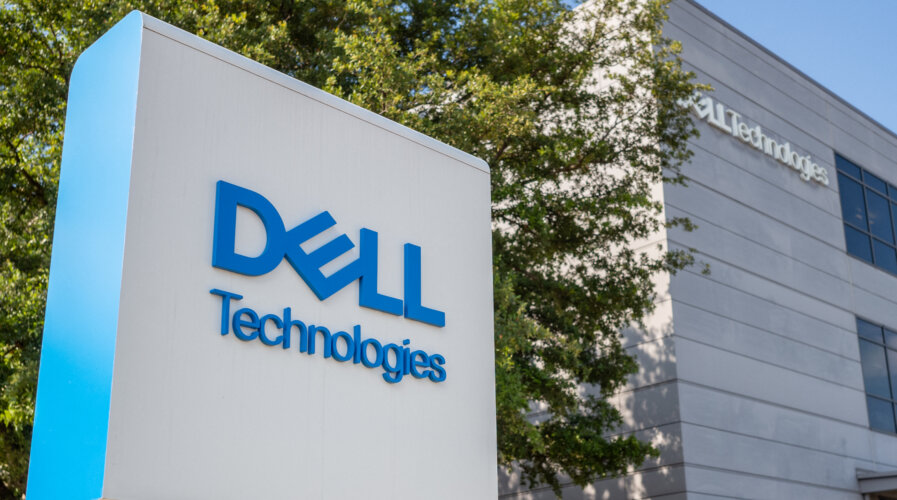
Dell is continuously refining their AI solutions to meet the business needs of customers in a variety of industries in APJ. (Photo by Brandon Bell / GETTY IMAGES NORTH AMERICA / Getty Images via AFP)
Dell unlocks the potential of AI in Asia Pacific
|
Getting your Trinity Audio player ready... |
- The Asia Pacific region is experiencing huge growth opportunities from the widespread use of generative AI and increased spending on AI systems in the region.
- Dell hopes its four-pronged AI strategy can position it to serve the market as a strategic partner helping customers work in complex ecosystems.
Investments in AI in the Asia Pacific have grown significantly in 2023, especially since the hype of generative AI use cases. Today, almost every organization in this part of the world already has or plans to invest in some form of AI technology for their work.
According to data from the Worldwide Artificial Intelligence Spending Guide, about US$55 billion is estimated to be spent on AI systems in Asia Pacific by 2026. What’s interesting is that 50% of the spending will be on GPU-accelerated servers which will either be on-premises or at the edge.
Tech companies are already prepared to support the growth and Dell Technologies is making sure that it plays a crucial role in the investments companies are making in AI as well.
“Recent advances in generative AI could represent a 20-30% productivity and efficiency improvement for many activities across the economy. That’s never happened before and for us, and many of our largest customers, it’s become the number one priority. Approximately 75% of companies are planning incremental, new funding to support generative AI initiatives,” stated Michael Dell, Chairman and CEO of Dell Technologies in his LinkedIn recently.

Tweet by Michael Dell on some of Dell’s generative AI capabilities.
John Roese, Global Chief Technology Officer at Dell Technologies pointed out that the last time the world witnessed a dramatic change in the productivity of IT systems was around 20 years ago, when ERP and CRM transformed how businesses use technology.
“Prior to generative AI, the user base of AI was limited to the several 100,000 deep technologists in the world who could understand it. After generative AI, the user base of AI became the entire population of the world. Now, a CEO, a head of sales, or a customer could decide that if they wanted something to happen based on an AI system, they could interact with it directly without necessarily being a data scientist or a computer scientist. This awakens the idea that we could apply this new class of AI systems to almost anything we could think of within our business processes and our society,” said Roese.

John Roese, Global Chief Technology Officer at Dell Technologies
At the same time, Roese also pointed out that with all the excitement, there’s a lot of concern because generative AI systems are not especially easy to understand. Generative AI, although complex, can “hallucinate” and generate false or incorrect information. Other concerns inclue where the data it uses comes from, and how it’s used – copyright, patent and trademark are another issue.
“Even with all of that complexity, the general consensus in the business community is that generative AI systems are starting to materialize now. In many different areas, they are likely to result in the movement of human work into the machine layer at a very gigantic level. In fact, many believe that upwards of a third of the work that is currently done across the world by people may be possible to be completed with generative AI systems. This will free up a tremendous amount of time and effort at the human layer. It will result in potentially faster, better outcomes. And most importantly, it will result in efficiency and productivity gains,” added Roese.
Dell and AI in the region
In the Asia Pacific and Japan (APJ) region, Peter Marrs, President, of APJ at Dell Technologies stated that generative AI is driving fundamental change in the pace of innovation while improving the customer experience and enabling significant productivity gains. Given the demand for the technology, Marrs also mentioned that Dell is well-positioned to serve the market in a unique and differentiated way with the world’s broadest generative I portfolio from desktop to data center to cloud.
Specifically, Dell has noticed four common trends for AI in the region. This includes:
- New service providers engaging with Dell to help build out their GPUaaS offerings.
- Traditional enterprises are engaging with Dell for initial pilots and inferencing requirements.
- Customers seeking unique and localized LLM model build-outs for diverse native APJ languages.
- Traditional partners leaning on validated designs aligning with multi-cloud offerings.
“Our focus is on private generative AI solutions, applying AI directly to enterprise core datasets to improve process capability, productivity, and efficiency. We work with our ecosystem of partners to deliver validated designs, reference architectures, and solutions that are easy for customers to consume,” added Roese.
Breaking down Dell’s AI strategy, the company is focused on four main pillars to help businesses in their AI journey. The four pillars are:
- AI-In – builds AI into Dell products and solutions.
- AI-On – runs AI workloads on Dell solutions.
- AI-For – uses AI for Dell’s own internal success.
- AI-With – AI with Dell’s ecosystem partners.
“AI will exist everywhere. Having an infrastructure company that can operate from the edge to the client to the data center to the cloud is a very, very significant advantage. Generative AI systems are complex system problems. And Dell is a company that is designed to help customers navigate complex system problems,” commented Roese.

Some of the AI use cases Dell is working on with organizations in APJ. (Image by Dell Technologies)
Capitalizing on the AI opportunity in APJ
Marrs delved into the current landscape of AI in APJ, noting the growth opportunities for the use of generative AI and increased spending on AI systems across the region. He also discussed prominent AI trends, highlighting that the region is one of the most diverse markets in the world with a wide variety of use cases that differ from country to country.
“Southeast Asia is leading the charge. There are also parts of North Asia like Korea and Japan where we are seeing very big interest. But I will say some of the deals that we’ve had and from the interest of wanting to adopt it quicker to solve business issues, Southeast Asia has been leading the charge,” said Marrs.
As most customers are still in the development phase, Roese believes that they are building theoretical large language models based on the belief that they can apply them to a business process.
“Now, we believe they will be successful, but they haven’t applied them yet. And so what we expect to happen is two things. The first is after they are successful with their first few projects, it will become much easier to do the next 100. Each of those will drive infrastructure and data and transformation. The second is the actual computing work will shift from training models to inferencing.
We have said this for a long time, the development of the model today is really where most people spend their time because it requires huge computing resources to build the model. The model does nothing at that phase, it just exists, to put it into production is inferencing, where you actually flow data through it. And in almost all cases, today, very few customers are actually doing large-scale inference.
After these models exist and go into production, the vast majority of compute capacity will happen there. That’s much more likely to happen at edges and factories close to the user or even directly on the personal computer. So, there’s a second wave of compute around inferencing. That hasn’t even begun yet,” explained Roese.
READ MORE
- Safer Automation: How Sophic and Firmus Succeeded in Malaysia with MDEC’s Support
- Privilege granted, not gained: Intelligent authorization for enhanced infrastructure productivity
- Low-Code produces the Proof-of-Possibilities
- New Wearables Enable Staff to Work Faster and Safer
- Experts weigh in on Oracle’s departure from adland




